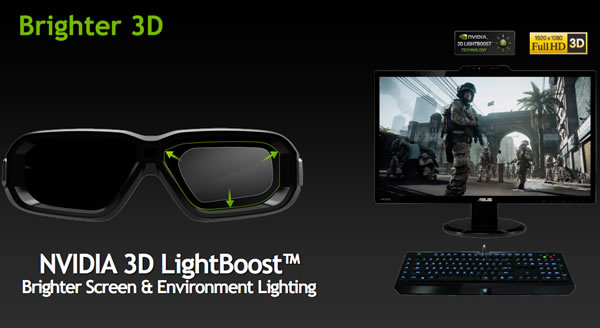Nvidia has overhauled its 3D Vision package, introducing refined glasses and displays that let you see more of the stuff you want to and less of the stuff you don't. The updated spectacles have 20% larger lenses that offer a broader viewing area, while the frame around the eyes is better at blocking external light, which some folks complained about with Nvidia's first-gen product. Additionally, the frame is designed with a thinner, more flexible composite material so it should be more comfortable to wear – especially with headphones.

To complement those changes, Nvidia has announced a patented technology dubbed "3D LightBoost," which enables brighter screens and environment lighting. The company claims its new display technology offers up to double the brightness of existing 3D monitors, along with improved color quality and less 3D ghosting. Asus' $699 VG278H will be the first LightBoost-equipped screen to hit shelves and it features a 27-inch 1080p panel, a 120Hz refresh rate, a 2ms response time, as well as HDMI 1.4 and dual-link DVI inputs.

Acer and BenQ also have LightBoost-ready displays in the pipeline, while Toshiba is preparing roughly half a dozen 3D Vision-ready notebooks across its Satellite, Dynabook and Qosmio lines. Nvidia's second-gen 3D Vision tech will be available this month in a $149 kit that includes two pairs of glasses and a wireless USB IR emitter. Individual glasses will be $99. It's worth noting that first-gen glasses will support LightBoost with a driver update, though you'll still need a new display and they tend to come with glasses anyhow.